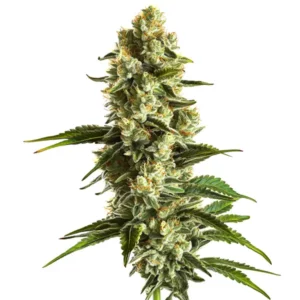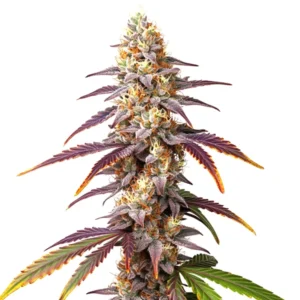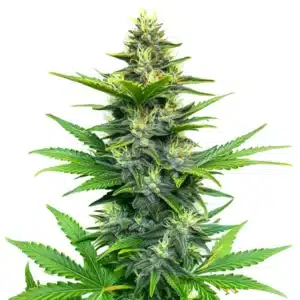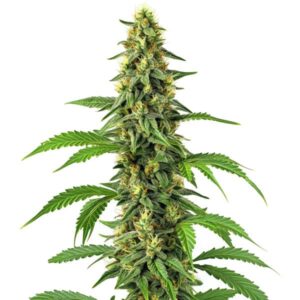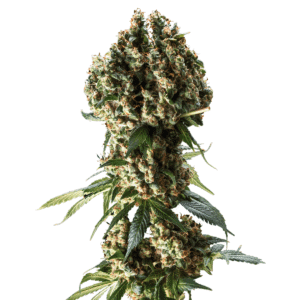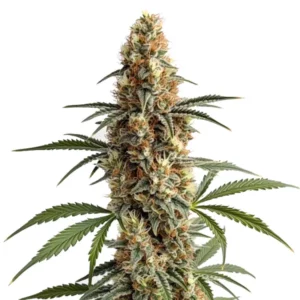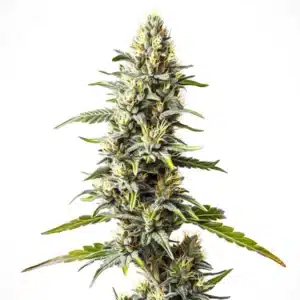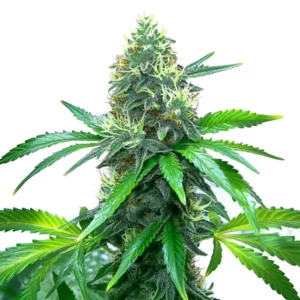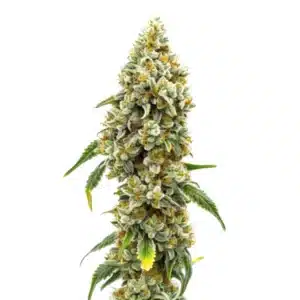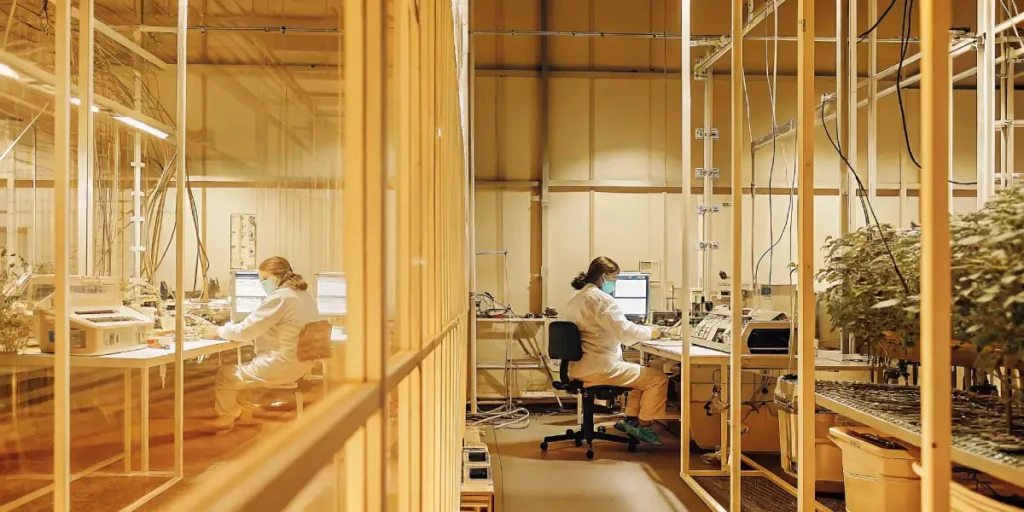
Enzyme Efficacy in Cannabinoid Isolation
Enzyme efficacy in cannabinoid isolation is a game changer for both novice and experienced cannabis enthusiasts. With enzymes, the extraction process becomes more efficient, allowing for purer final products. Think of enzymes as little helpers that speed up chemical reactions, making them essential in refining cannabinoids like CBD and THC.
For those diving into the world of cannabis cultivation, knowing how to optimize enzyme activity for cannabinoid isolation can be a significant advantage. By doing so, you ensure that you’re not only growing quality cannabis but also extracting its valuable compounds effectively. Whether you’re working with high-CBD strains or THC-rich varieties, enzymes play a crucial role in ensuring the best possible yield.
Recommended Strains
Banana Cream
|
|
THC | 28% - 30% (High) |
|
|
Type | Feminized |
|
|
Yield | Medium |
|
|
Phenotype | 70% Indica / 30% Sativa |
Banana Kush
|
|
THC | 17% - 21% (Medium) |
|
|
Type | Feminized |
|
|
Yield | High |
|
|
Phenotype | 60% Indica / 40% Sativa |
Consider the strain Banana Kush from Blimburn Seeds. Known for its rich cannabinoid profile, using enzymes can enhance the extraction of its active compounds. By focusing on enzyme performance in CBD and THC separation, growers can maximize their harvest’s potential.
Enhancing Cannabinoid Isolation with Enzymatic Methods
Enzymes are natural catalysts. They speed up reactions without undergoing permanent changes themselves. In the context of cannabis, they break down complex plant materials, making it easier to isolate cannabinoids. This process is like peeling layers of an onion, revealing the valuable compounds within.
Using enzymatic methods means you’re not reliant on harsh chemicals. This is crucial for first-time growers who want to maintain the purity of their strains. For instance, when working with a strain like Gelato, enzymes can help in maintaining its unique flavor profile while efficiently extracting cannabinoids.
Enzymatic methods are not just about purity, but also about achieving a balance between efficiency and quality. By enhancing cannabinoid isolation with enzymatic methods, growers can ensure that each extraction process is both thorough and gentle. This balance allows for the retention of the plant’s natural essence while focusing on enzyme-assisted cannabinoid extraction efficiency.
Furthermore, using enzymes reduces the environmental impact of cannabinoid extraction. Unlike traditional chemical methods, enzymatic processes are more sustainable and biodegradable, aligning with eco-friendly practices. This makes them an appealing choice for environmentally conscious cultivators.
Optimizing Enzyme Activity for Cannabinoid Isolation
Optimizing enzyme activity is about finding the right conditions where enzymes work best. Temperature, pH levels, and enzyme concentration all play a part. Imagine baking a cake; the right temperature ensures it rises perfectly. Similarly, the right conditions enhance enzyme efficacy in cannabinoid isolation.
Temperature is vital. Too high, and enzymes lose their shape. Too low, and the reactions slow down. Aim for a moderate range where enzyme-assisted cannabinoid extraction efficiency is at its peak. This ensures that cannabinoids are extracted swiftly and effectively.
The concentration of enzymes is another critical factor. Too little, and the process can be inefficient; too much, and it can become uneconomical. Finding the optimal concentration is key to maximizing efficiency without unnecessary waste. This is a crucial step in optimizing enzyme activity for cannabinoid isolation, ensuring that resources are used effectively.
Additionally, the duration of enzyme exposure can affect the outcome. Allowing enzymes to work for the right amount of time ensures that the reactions reach completion, providing a high yield of cannabinoids. Monitoring these variables closely can lead to significant improvements in extraction outcomes.
Promos & Deals
The Function of Enzymes in Cannabinoid Purification Processes
Enzymes are the unsung heroes in cannabinoid purification processes. They refine the extract, removing unwanted materials and leaving behind pure cannabinoids. This is especially beneficial for growers aiming for high-quality extracts without impurities.
With enzymes, the purification process becomes more streamlined. Imagine trying to find a needle in a haystack; enzymes act like magnets, drawing out the cannabinoids efficiently. This ensures the final product is of the highest quality, appealing to both new and seasoned cannabis users.
The function of enzymes in cannabinoid purification processes extends beyond just cleaning the extract. They work to enhance the overall quality and consistency of the final product. By ensuring that only the desired compounds are retained, enzymes help in producing a more potent and reliable extract.
Moreover, enzymes offer a level of precision in purification that is hard to achieve with other methods. This precision is crucial for maintaining the therapeutic and recreational value of the cannabinoids, ensuring they deliver the expected effects with each use.
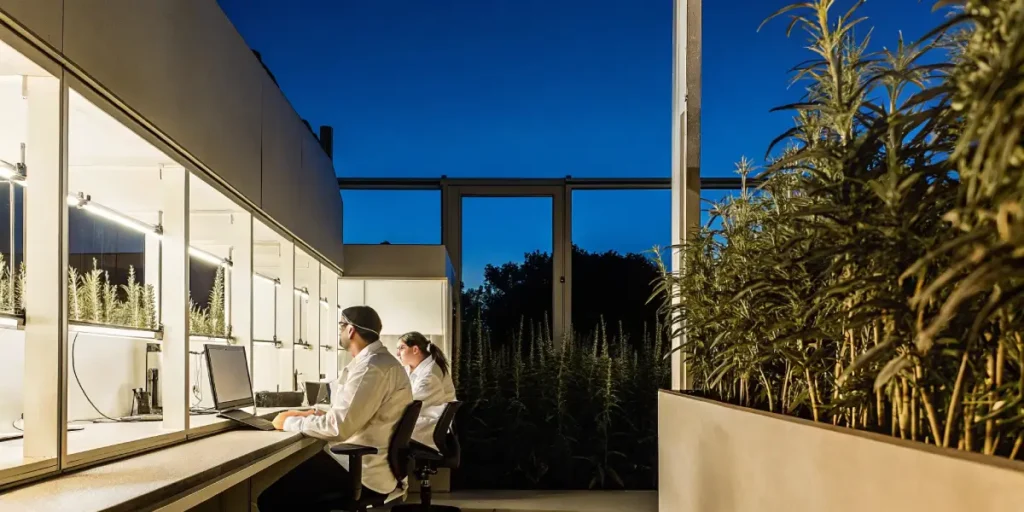
Practical Tips for Using Enzymes in Cannabinoid Extraction
Start by choosing the right enzyme. Not all enzymes are created equal. Some are better suited for breaking down plant fibers, while others excel in isolating cannabinoids. Research and select the best fit for the strain you’re working with, whether it’s Gelato or Banana Kush.
Monitor the extraction process. Keep an eye on temperature and pH levels. Adjust as needed to ensure enzyme efficacy in cannabinoid isolation remains optimal. This hands-on approach ensures you’re maximizing the potential of your cannabis strain.
Another practical tip is to regularly calibrate your equipment. Precision tools used in measuring temperature and pH must be accurate to maintain the conditions necessary for optimal enzyme activity. This ensures that enzyme-assisted cannabinoid extraction efficiency is consistently high.
Additionally, it’s essential to continuously evaluate and refine your enzymatic methods. As you become more experienced, you might discover new ways to tweak the process for better results. Stay open to experimentation and innovation to keep improving your extraction techniques.
FAQs
What are the benefits of using enzymes in cannabinoid extraction?
Enzymes offer a cleaner extraction method compared to traditional chemical processes. They help break down plant materials, isolating cannabinoids more efficiently. This results in purer extracts, which are essential for both recreational and medicinal use.
Additionally, enzymes reduce the need for harsh chemicals, making the process more environmentally friendly. First-time growers can achieve high-quality extracts without the complexities associated with chemical extractions. This makes enzymes a preferred choice for many in the cannabis community.
Using enzymes also allows for greater control over the extraction process. By adjusting various parameters, growers can fine-tune the process to suit specific needs, leading to customized extracts with desired potency and purity.
Furthermore, enzyme-assisted cannabinoid extraction efficiency can lead to cost savings over time. As the process becomes more optimized, less waste is produced, and fewer resources are needed, making it a more economical choice in the long run.
How do I optimize enzyme activity in my extraction process?
To optimize enzyme activity, focus on the conditions under which enzymes thrive. This includes maintaining the right temperature and pH levels. Each enzyme has its optimal conditions, so it’s crucial to research and apply these for maximum efficacy.
Experimentation is key. Start with recommended settings and adjust based on your observations. This approach ensures that you’re getting the best out of your enzymes, leading to high-quality cannabinoid isolation.
Besides to temperature and pH, consider the substrate concentration. The right balance between enzyme and substrate can significantly affect the efficiency of the extraction process. Adjusting these concentrations can lead to improved enzyme performance in CBD and THC separation.
Furthermore, regularly reviewing and updating your methods based on the latest research can keep your processes at the forefront of efficiency. Staying informed about new developments in enzyme technology can provide insights that lead to better extraction outcomes.
Can enzymes be used for all cannabis strains?
Yes, enzymes can be used across different cannabis strains. However, the effectiveness might vary depending on the strain’s specific characteristics. Strains like Black D.O.G. or Banana Kush might require tailored enzymatic conditions for optimal results.
It’s essential to understand the unique attributes of each strain you’re working with. By doing so, you can tweak the enzymatic process to suit the strain, ensuring efficient cannabinoid extraction every time.
For strains with complex profiles, custom enzyme blends might be necessary. These tailored solutions ensure that the specific properties of the strain are preserved while optimizing enzyme activity for cannabinoid isolation.
Additionally, keeping a detailed record of the conditions and results for each strain can help refine future extractions. This documentation can serve as a valuable reference, allowing for continuous improvement in enzyme-assisted extraction techniques.
Are there any downsides to using enzymes in extraction?
While enzymes offer numerous benefits, they require careful handling. The conditions need to be just right for them to work effectively. This might involve a learning curve, especially for first-time users.
Moreover, enzymes can be sensitive to extreme conditions. If not stored or used correctly, their efficacy might diminish. However, with proper knowledge and practice, these challenges can be easily managed.
Another potential downside is the initial cost of setting up an enzymatic extraction process. Quality enzymes and precise equipment can be expensive upfront, although they often pay off in the long term through enhanced efficiency and quality.
Despite these challenges, the benefits of using enzymes often outweigh the downsides. With ongoing research and advancements, many of the current limitations are being addressed, making enzymatic methods increasingly accessible and effective.
What cannabis strains from Blimburn Seeds are ideal for enzymatic extraction?
Banana Kush is an excellent choice for enzymatic extraction. Its rich cannabinoid profile makes it ideal for those looking to maximize their yield. The use of enzymes ensures that the extraction is both efficient and of high quality.
Gelato and Black D.O.G. are also great options. Both strains benefit from enzymatic extraction methods, ensuring purity and potency with every batch. These strains offer a diverse range of cannabinoids, making them perfect candidates for enzymatic processes.
Furthermore, these strains’ unique flavor and aromatic profiles are better preserved through enzymatic methods compared to traditional chemical extractions. This ensures that the final product not only has the desired cannabinoid concentration but also retains the sensory qualities that make these strains popular.
Enzymatic extraction allows for a more nuanced approach to capturing the essence of these strains. By optimizing the process for each specific strain, growers can achieve superior results that highlight the best features of their cannabis.



